Wall Panelling: Adding Subtle Elegance to your Walls
Wall panelling is a versatile interior design technique that can be incorporated to easily elevate the look of your home or office surroundings, by adding a touch of sophistication. Originating from traditional wood-clad walls in historic homes, wall panelling has evolved to include a variety of materials and styles, making it suitable for both classic and contemporary interiors.
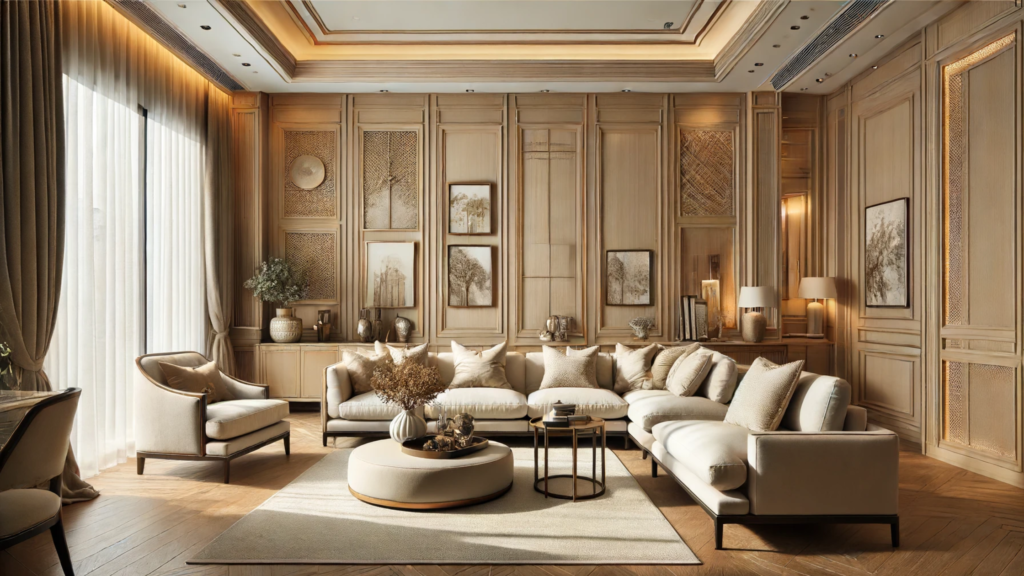
Table of Contents
Benefits of Wall Panelling
Aesthetic Enhancement
Wall panelling adds texture, depth, and character to a room, transforming plain walls into stylish focal points. It can complement various interior design styles, from rustic and traditional to modern and minimalist.
Durability and Protection
Panelling provides an additional layer of protection to walls, shielding them from dents, scratches, and other damages. This is particularly useful in high-traffic areas or homes with children and pets.
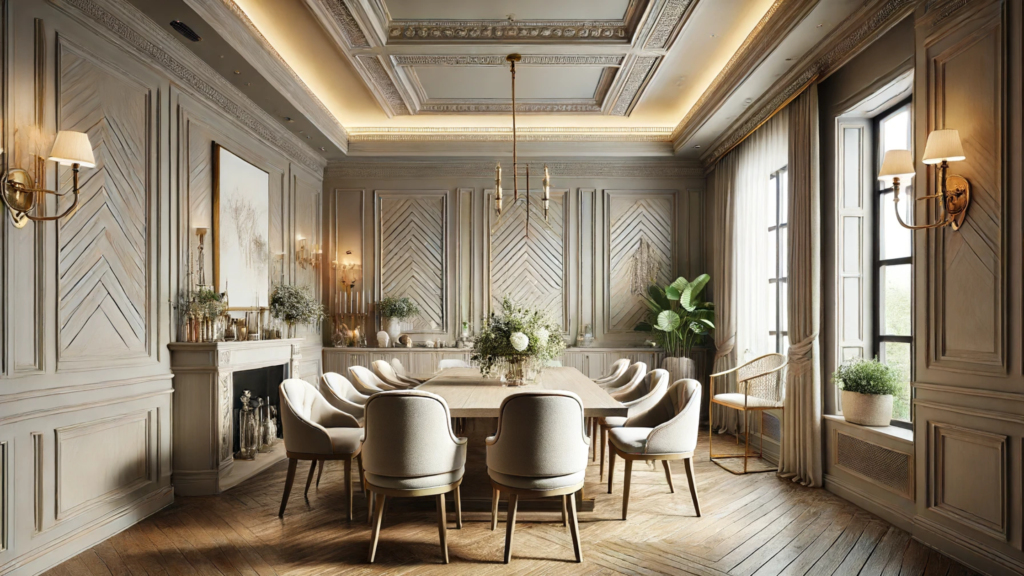
Insulation and Soundproofing
Certain types of wall panelling materials, like wood and MDF, offer excellent insulation properties, helping to maintain a consistent indoor temperature. Additionally, panelling can enhance soundproofing, reducing noise transmission between rooms.
Versatility in Design Options
Wall panelling comes in numerous styles, including shiplap, wainscoting, beadboard, and board and batten, allowing homeowners to choose the perfect look for their space. It can be painted, stained, or left in its natural finish to suit individual tastes.
Easy Maintenance
Wall panels are generally easy to clean and maintain. Unlike painted walls, which may require frequent touch-ups, panelling can be wiped down with a damp cloth to remove dust and dirt.
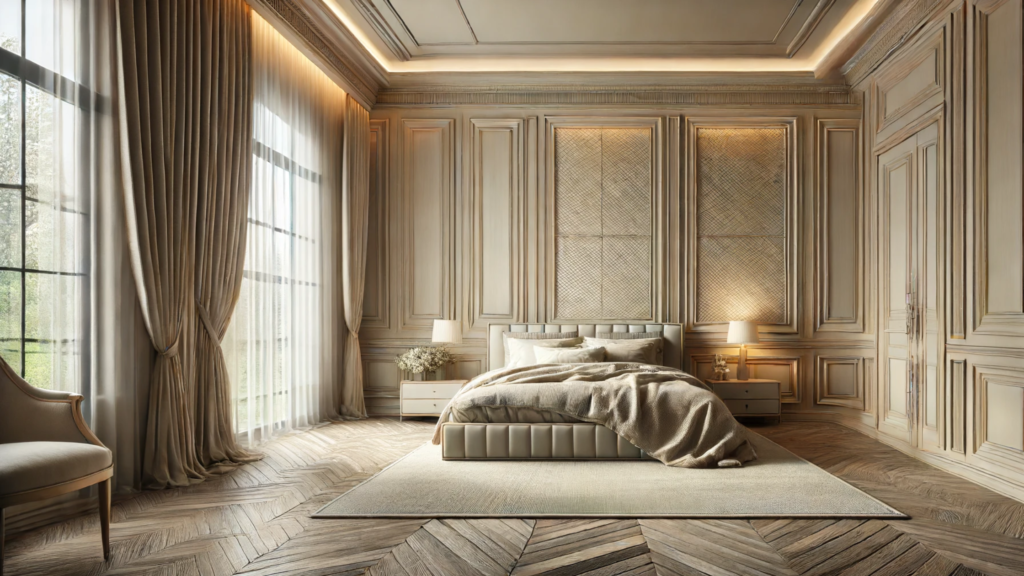
Wall Panelling Materials and Wall Décor Ideas
Wood Panelling
Types of Wood: Pine, Oak, Cedar, Reclaimed Wood
Wood panelling remains a classic choice for many homeowners, offering a natural and timeless look. Pine is a popular option due to its affordability and ease of installation, while oak is favored for its durability and rich grain patterns. Cedar is known for its aromatic properties and resistance to decay, making it ideal for damp environments. Reclaimed wood, with its unique, weathered appearance, adds character and sustainability to any design, giving new life to old materials.
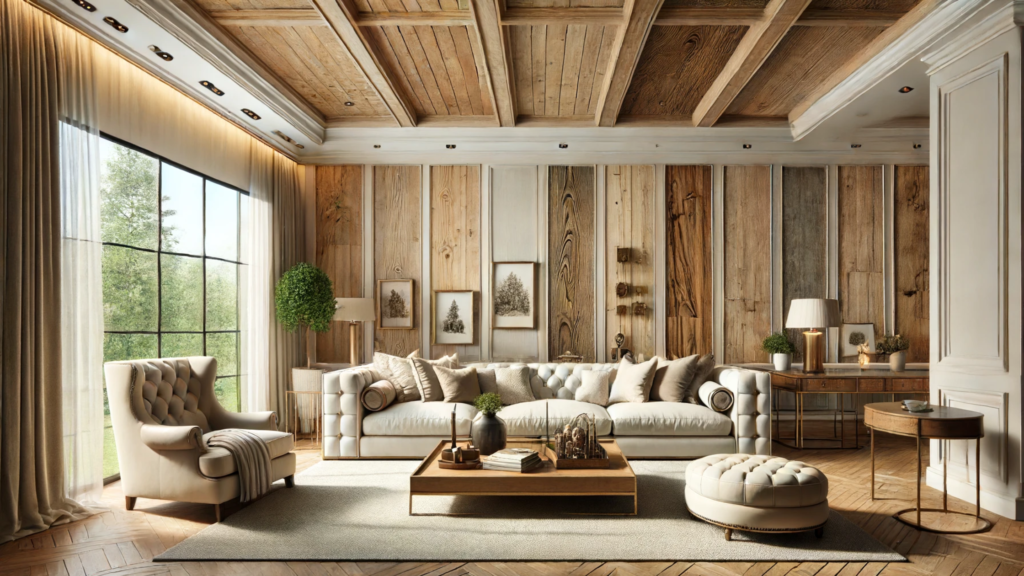
Pros and Cons of Wood Panelling
The benefits of wood panelling include its natural beauty, warmth, and versatility. It can be stained or painted to match any decor and provides good insulation. However, wood panelling can be susceptible to moisture damage, warping, and pests if not properly treated. Additionally, it may require more maintenance than some other materials and can be more expensive depending on the type of wood chosen.
Maintenance and Care Tips
To maintain wood panelling, regular dusting and occasional cleaning with a damp cloth are necessary. It’s important to avoid excessive moisture and to treat the wood periodically with a protective finish to preserve its appearance and durability. For reclaimed wood, a thorough cleaning and treatment to remove any pests or contaminants is essential before installation.
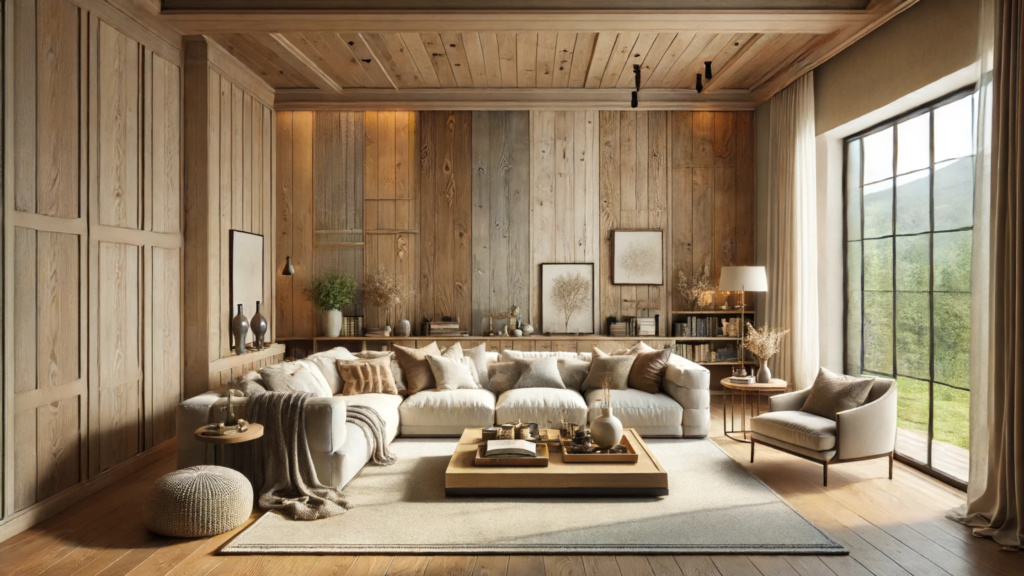
MDF (Medium Density Fibreboard)
Advantages of MDF for Wall Panelling
MDF is an engineered wood product made from compressed wood fibers, offering a smooth and consistent surface. It is less expensive than solid wood and can be easily painted or veneered, making it a cost-effective option for many homeowners. MDF is also resistant to warping and cracking, providing a stable and durable panelling solution.
Common Uses and Design Styles
MDF is commonly used for wainscoting, beadboard, and shiplap styles, providing a clean and polished look. It is ideal for painted finishes, allowing for a wide range of colors and designs. MDF panelling can be used in various settings, from traditional to modern interiors, and is particularly popular in high-traffic areas like hallways and kitchens due to its durability.
Installation and Maintenance
Installing MDF panelling involves cutting the panels to size, attaching them to the wall with adhesive or nails, and finishing with paint or veneer. Maintenance is relatively simple, requiring regular dusting and occasional cleaning with a damp cloth. It’s important to avoid prolonged exposure to moisture, as MDF can swell if it gets wet.
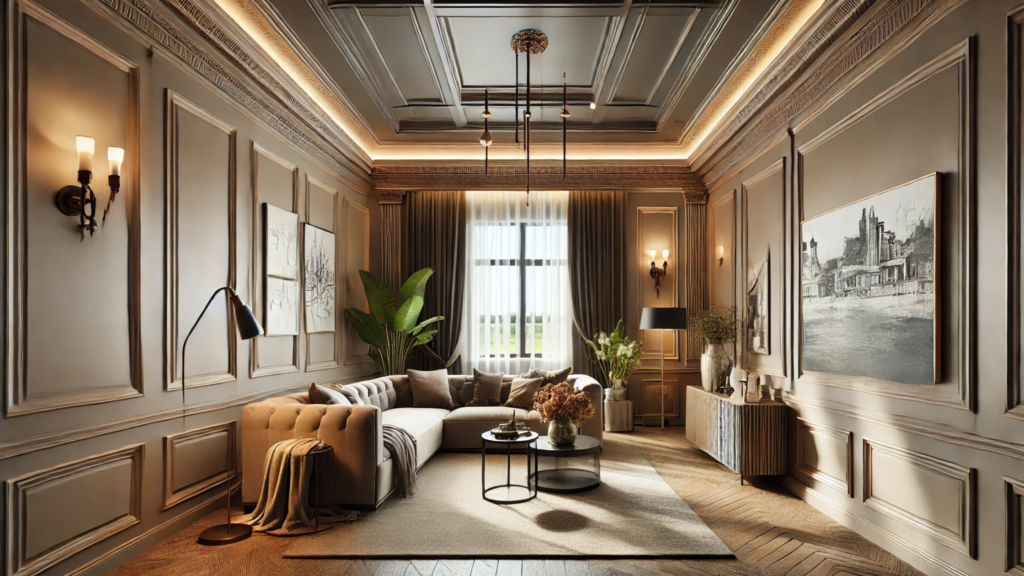
PVC and Vinyl Panelling
Installation and Maintenance
PVC and vinyl panelling are highly durable and water-resistant, making them suitable for areas prone to moisture, such as bathrooms and kitchens. These materials are resistant to mold, mildew, and insect damage, providing a low-maintenance and long-lasting wall covering.
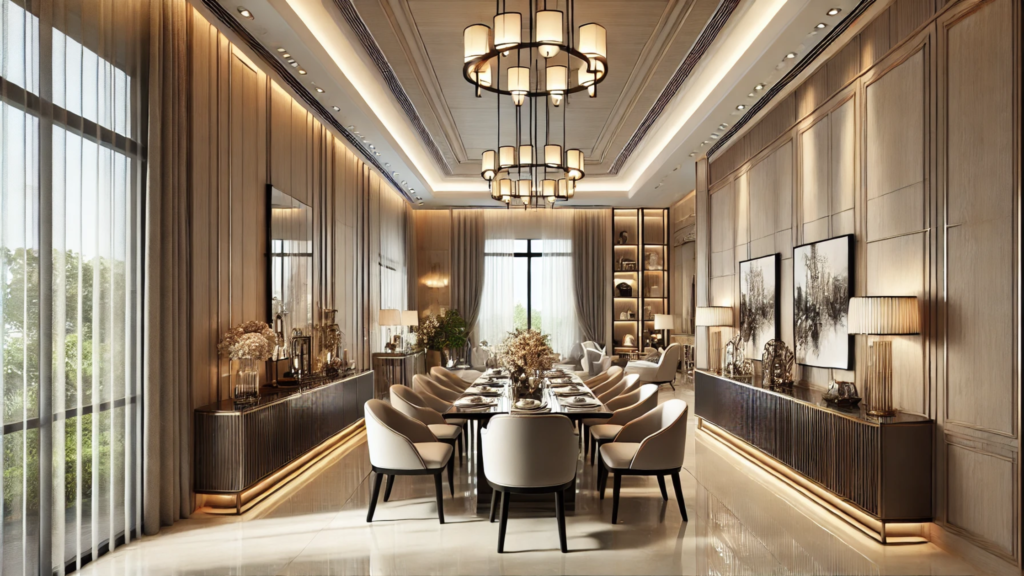
Ideal Applications and Design Options
PVC and vinyl panels come in a variety of designs, including faux wood and stone finishes, allowing homeowners to achieve the look of natural materials without the associated maintenance. They are ideal for creating clean, modern lines or for use in utility areas where durability and ease of cleaning are paramount.
Installation Guidelines
Installation of PVC and vinyl panelling is straightforward, often involving interlocking panels that snap together and are attached to the wall with adhesive or screws. These materials can be cut to size with standard tools and typically require minimal finishing work. Maintenance involves regular cleaning with mild soap and water, making it an easy-care option.
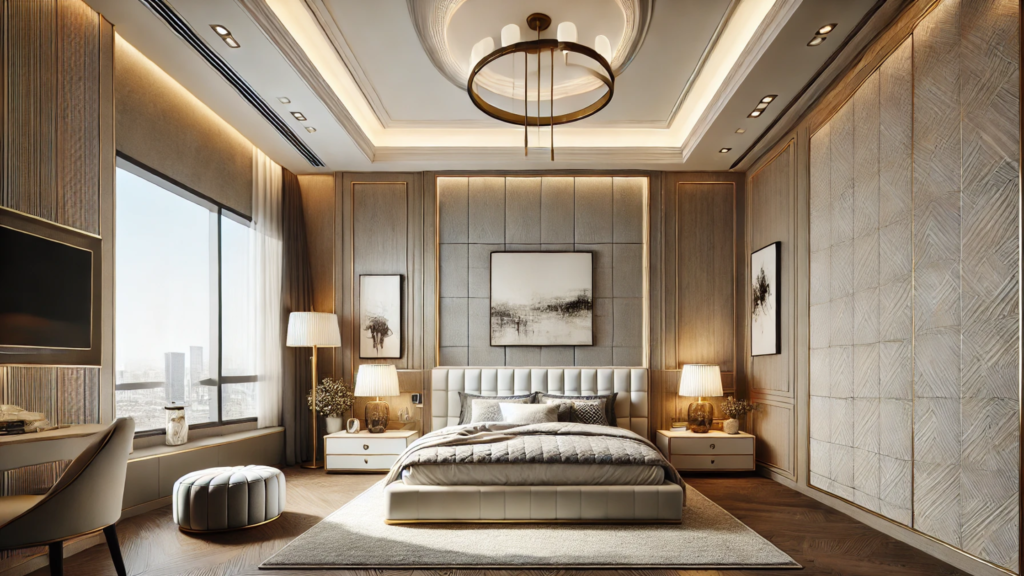
Installation Guidelines
Installation of PVC and vinyl panelling is straightforward, often involving interlocking panels that snap together and are attached to the wall with adhesive or screws. These materials can be cut to size with standard tools and typically require minimal finishing work. Maintenance involves regular cleaning with mild soap and water, making it an easy-care option.
Metal Panelling
Industrial and Modern Design Aesthetics
Metal panelling is a bold choice that brings an industrial or modern edge to interior spaces. It is commonly used in lofts, contemporary homes, and commercial settings to create a sleek and edgy aesthetic. Metals like aluminum, stainless steel, and copper offer unique finishes and textures that can be used to make striking feature walls.
Types of Metal Used in Panelling
The most common metals used for panelling are aluminum, stainless steel, and copper. Aluminum is lightweight and corrosion-resistant, making it suitable for various applications. Stainless steel offers a clean, modern look with excellent durability, while copper provides a warm, rich patina that develops over time, adding character to the space.
Installation Considerations
Installing metal panelling requires careful handling and precise measurements. Panels are typically attached to the wall using screws or adhesive, and proper alignment is crucial to achieve a seamless look. Metal panelling can be more challenging to cut and shape compared to other materials, so professional installation is often recommended. Maintenance involves regular cleaning to prevent tarnish and maintain the desired finish.
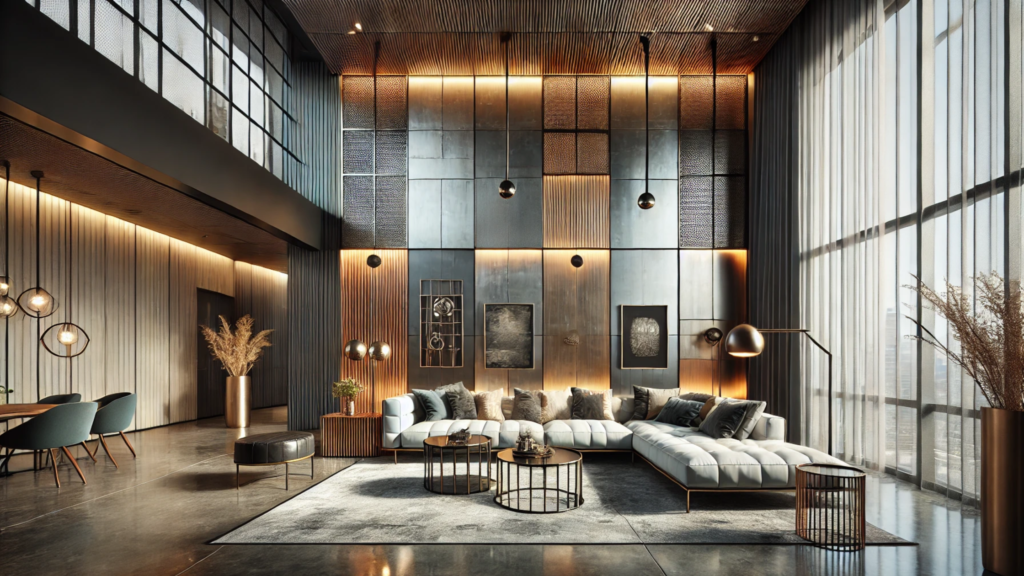
Fabric and Upholstered Panels
Adding Texture and Warmth to a Room
Fabric and upholstered panels are an excellent choice for adding texture and warmth to a room. They provide a soft, tactile surface that enhances the comfort and coziness of a space. These panels can also improve acoustics by absorbing sound, making them ideal for bedrooms, home theaters, and offices.
Ideal Spaces and Styles
Fabric and upholstered panels are versatile and can be used in various settings. In bedrooms, they create a plush, luxurious backdrop, often used as headboards or accent walls. In living rooms or dining rooms, they add sophistication and elegance, while in offices or home theatres, they enhance sound quality and reduce noise.
Installation and Maintenance Tips
Installing fabric panels typically involves attaching a backing board to the wall and securing the fabric or upholstery over it. This can be done with adhesive, staples, or a combination of both. Maintenance includes regular vacuuming to remove dust and occasional spot cleaning to address stains. For more thorough cleaning, professional upholstery services may be required to maintain the fabric’s appearance and longevity.
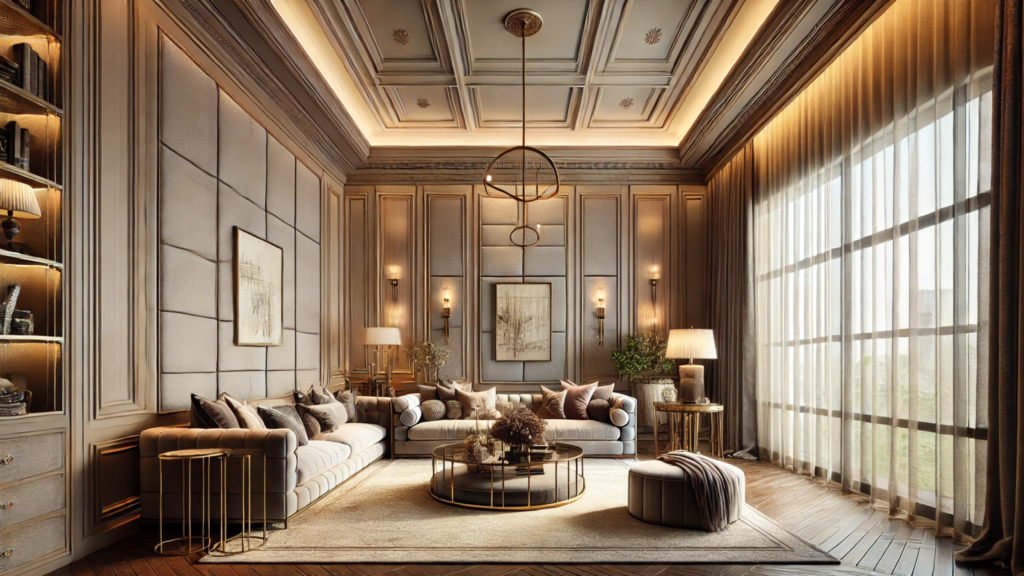
Popular Wall Panelling Techniques
Shiplap Panelling
Shiplap panelling consists of long, horizontal wooden boards that overlap each other, creating a distinctive gap between the planks. This design originated in shipbuilding, where the overlapping boards helped to create a watertight seal. Shiplap panelling is versatile and can be used in various spaces, including living rooms, bedrooms, kitchens, and bathrooms. It works particularly well in rustic, farmhouse, coastal, and modern interiors. Shiplap can be painted in different colors to suit various design aesthetics, from crisp white for a classic look to bold hues for a contemporary twist.
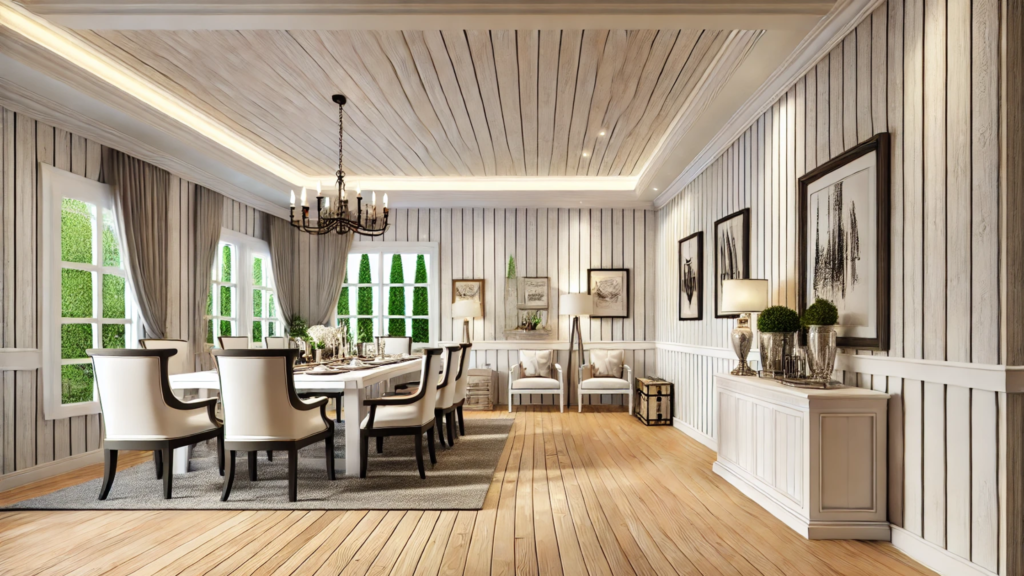
Wainscoting
Wainscoting is a decorative wall panelling technique that covers the lower portion of walls. It comes in various styles, including raised panel, flat panel, and beadboard. Raised panel wainscoting features panels that protrude from the wall, creating a three-dimensional effect. Flat panel wainscoting has recessed panels that sit flush with the wall, offering a more streamlined look. Beadboard wainscoting consists of vertical planks with a grooved pattern, adding texture and a cottage-style charm. In modern applications, wainscoting is used to add texture and visual interest to any room, including bathrooms, hallways, and kitchens.
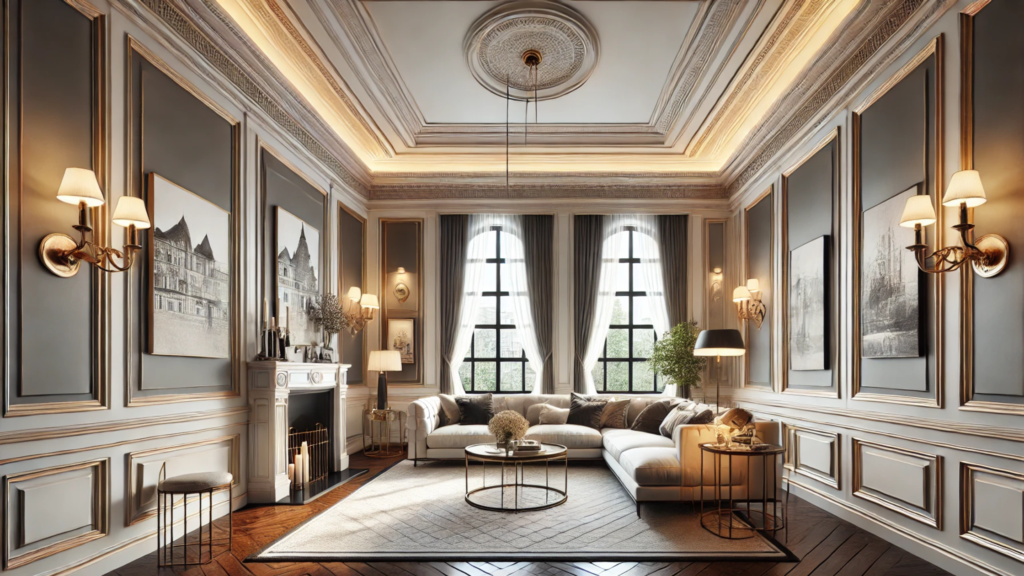
Board and Batten
Board and batten panelling consists of wide boards that are installed vertically on the wall, with narrow strips or battens covering the seams between the boards. This creates a distinctive, grid-like pattern. Variations include different board widths, batten sizes, and spacing, allowing for customized looks ranging from traditional to modern. Board and batten panelling is suitable for various rooms, including living rooms, bedrooms, dining rooms, and entryways. It complements a range of design aesthetics, such as farmhouse, coastal, transitional, and contemporary. This panelling style adds architectural interest and a sense of height to any room.
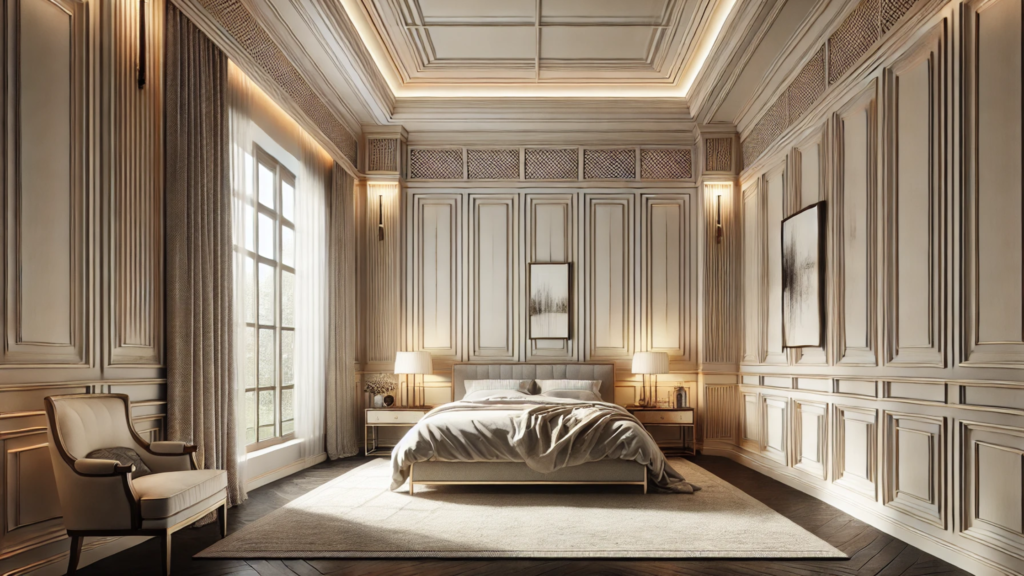
Beadboard Panelling
Beadboard panelling consists of narrow, vertical planks with a distinctive grooved pattern. Classic beadboard features evenly spaced grooves and is typically painted white, evoking a cottage or coastal style. Contemporary beadboard can vary in groove width and be painted in bold colors or left in natural wood finishes, adapting to modern and eclectic interiors. Beadboard is commonly used in bathrooms, kitchens, and mudrooms for its moisture resistance and easy maintenance. It can also be used as a backsplash, on ceilings, or as an accent wall to add texture and visual interest. The benefits of beadboard include its ability to hide wall imperfections, its durability, and its versatility in various design styles.
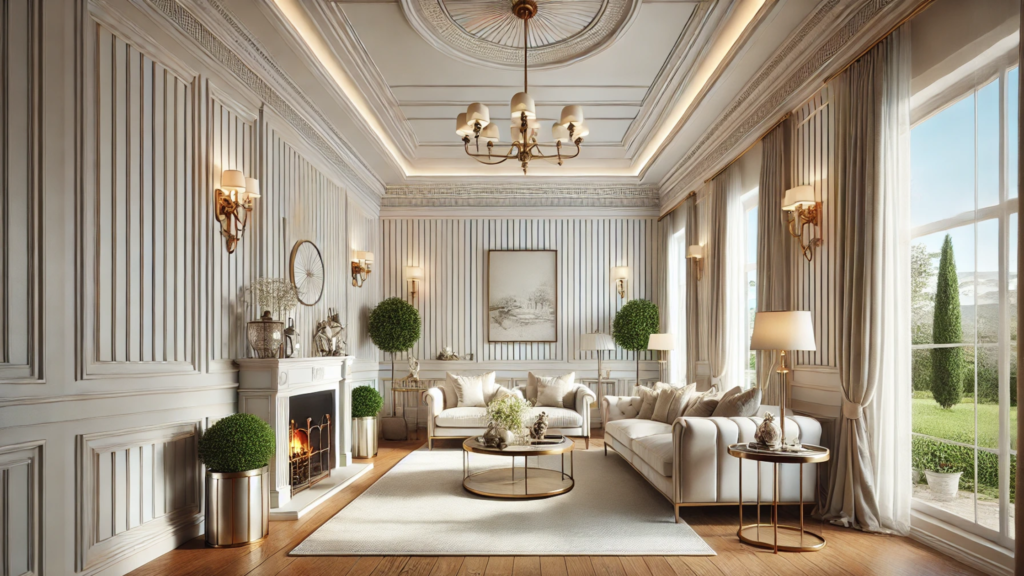
Tongue and Groove Panelling
Tongue and groove panelling features boards with interlocking edges—one side has a tongue, and the other has a groove. This design allows the boards to fit snugly together, creating a smooth, continuous surface. Tongue and groove panelling is commonly used for walls, ceilings, and even floors, providing a seamless and durable finish. Tongue and groove panelling can be used in various rooms to add a touch of elegance and warmth. In living rooms and bedrooms, it can create a cozy, inviting atmosphere. In kitchens and bathrooms, it provides a clean, polished look that complements both traditional and modern decor.
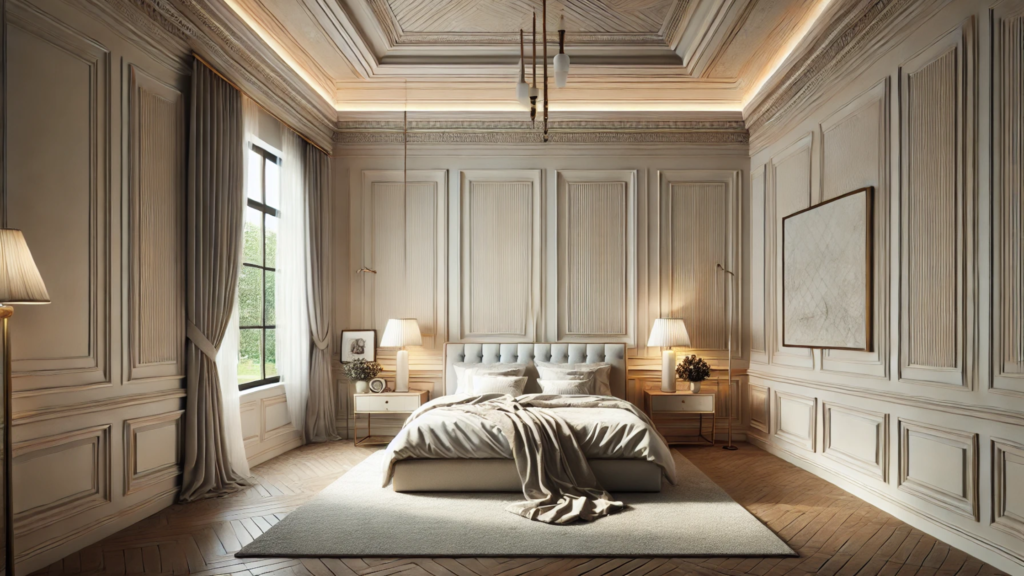
Maintenance and Care for Wall Panelling
Proper maintenance and care are essential for preserving the beauty and integrity of wall panelling. Here are some tips for regular cleaning and upkeep, repairing and maintaining different materials, and long-term care to preserve the elegance of your wall panelling:
Regular Cleaning and Upkeep
- Dusting: Regularly dust your wall panelling using a soft cloth or microfiber duster to remove surface dust and dirt. This prevents buildup and maintains the appearance of the panels.
Gentle Cleaning Solution: For deeper cleaning, use a mild cleaning solution diluted in water. Avoid harsh chemicals or abrasive cleaners, as they can damage the finish of the panels. - Wiping Down: Dampen a soft cloth with the cleaning solution and gently wipe down the wall panelling, working in small sections. Immediately dry the panels with a clean, dry cloth to prevent water damage.
- Avoid Excess Moisture: Prevent moisture buildup on the panels, especially in humid environments or areas prone to splashes, such as bathrooms and kitchens. Wipe up spills promptly to avoid water stains and warping.
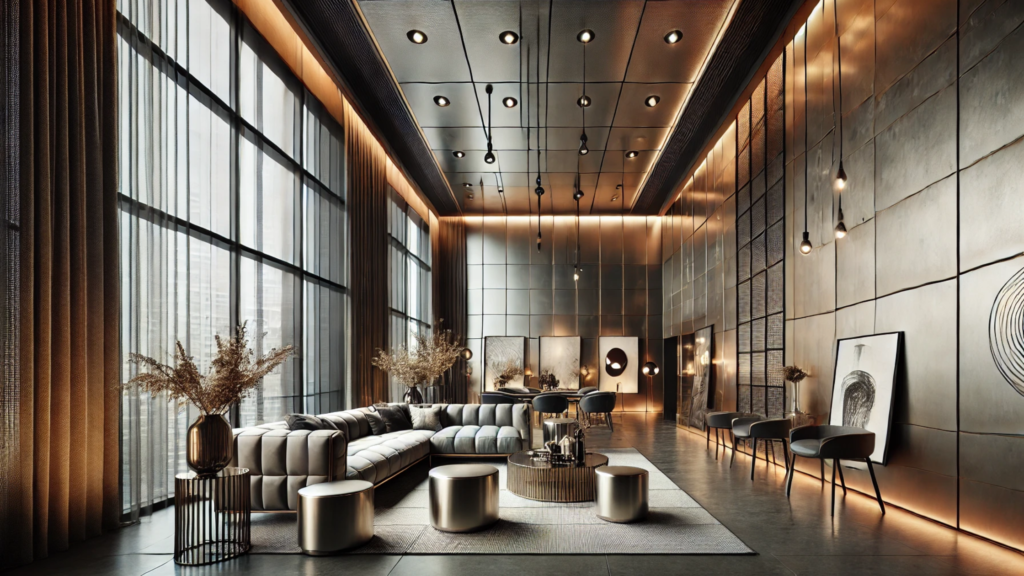
Conclusion
In conclusion, wall panelling is a versatile and impactful way to enhance your home decor, adding elegance, texture, and architectural interest to your living spaces. By carefully selecting the right materials, styles, and finishes, and paying attention to maintenance and care, you can create stunning interiors that reflect your personal style and enhance the overall beauty and value of your home. Whether you’re renovating your entire home or simply updating a single room, wall panelling offers endless possibilities for transforming your space into a truly extraordinary place to live. Visit our website and contact us to know more.
Frequently Asked Questions (FAQs)
What is wall panelling, and why is it popular?
- Wall panelling involves covering walls with materials such as wood, MDF, PVC, or metal to enhance their aesthetic appeal and functional properties.
- It has gained popularity due to its ability to add elegance, texture, and architectural interest to any room, transforming plain walls into stunning focal points.
What are the different types of wall panelling techniques?
- There are various types of wall panelling techniques, including shiplap, wainscoting, board and batten, beadboard, and tongue and groove.
- Each technique offers unique design possibilities and aesthetic appeal, allowing homeowners to customize their decor to suit their preferences.
What materials are commonly used for wall panelling?
- Common materials used for wall panelling include wood, MDF (Medium Density Fiberboard), PVC, vinyl, metal, and fabric.
- Each material has its own set of advantages, such as durability, water resistance, ease of installation, and aesthetic appeal, making it suitable for different design styles and practical needs.
Where can wall panelling be installed in a home?
- Wall panelling can be installed in various rooms throughout a home, including living rooms, bedrooms, kitchens, bathrooms, and even hallways and entryways.
- It can be used to create accent walls, highlight architectural features, or add texture and warmth to any space, enhancing the overall decor and ambiance.
SJ DESIGN CONSULTANTS
Transforming your vision into reality. Explore designs that inspire, elevate, and redefine your lifestyle with SJ Design Consultants.
